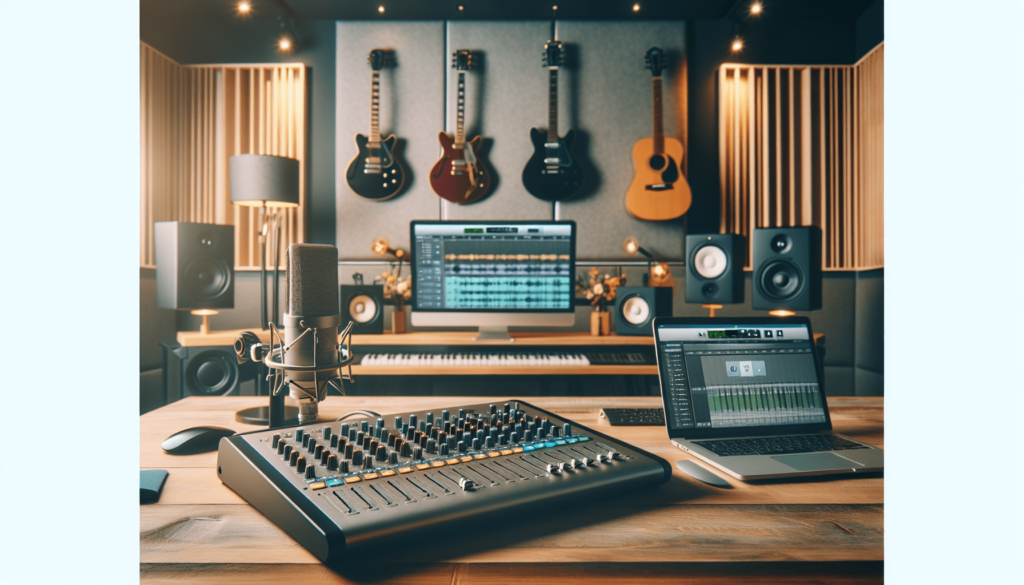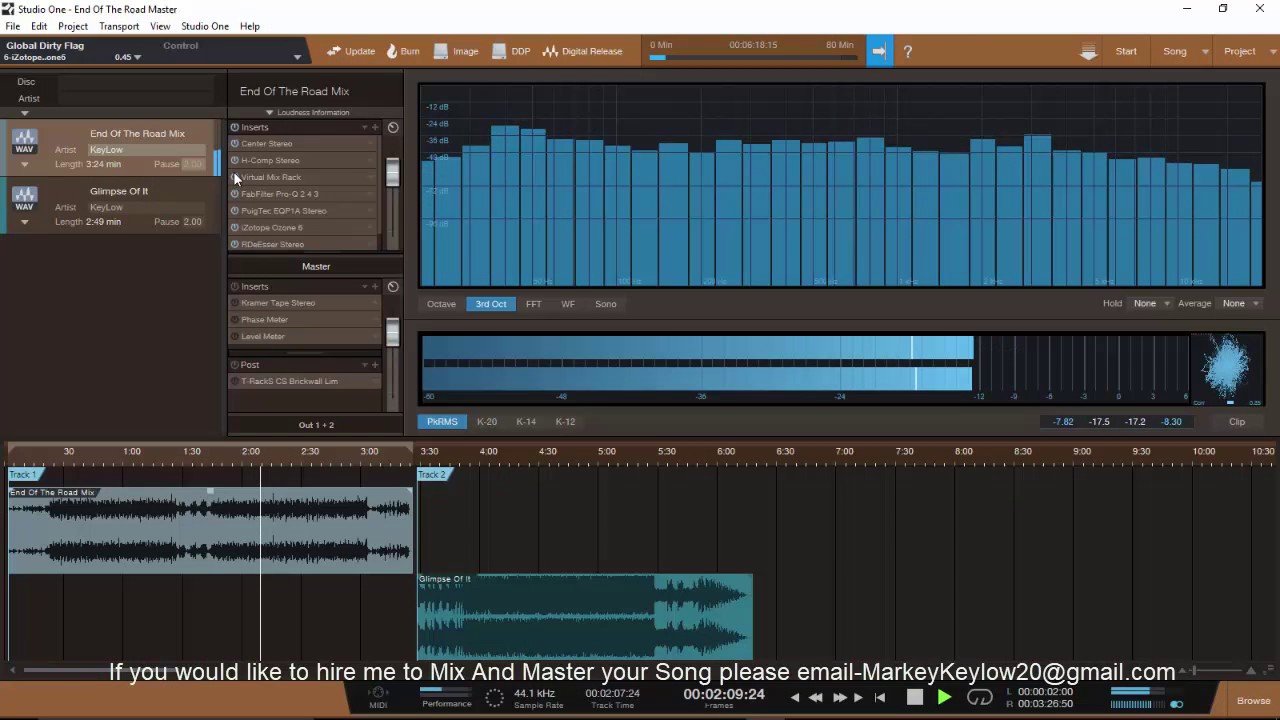Have you ever thought about recording your own music or podcasts from the comfort of your home?
Understanding DAWs: A Brief Overview
Digital Audio Workstations (DAWs) are software platforms that allow you to record, edit, and produce audio files. With a variety of options available, selecting the right DAW can be challenging, especially for beginners. Audacity stands out as a free, open-source software that is compatible with many operating systems, making it a popular choice for home recording.
Why Choose Audacity?
Audacity offers a straightforward interface that is user-friendly, even for those without previous audio editing experience. The software supports a wide range of audio formats, provides editing tools for both beginners and experienced users, and has a vibrant community for support.
Features of Audacity
Audacity comes packed with features that can really boost your home recording experience. Here’s a closer look at what you can do with it.
Multitrack Editing
One of the standout features of Audacity is its ability to handle multitrack recordings. You can layer various sound sources, which makes it perfect for music production or podcasting.
Benefits of Multitrack Editing:
- Overdub vocals and instruments for richer sound.
- Combine various audio clips seamlessly.
- Adjust levels individually for a polished final product.
Audio Effects and Processing
Audacity provides a range of effects that you can apply to your audio. These include equalization, compression, reverb, and more.
Common Effects Used in Audacity:
| Effect | What It Does |
|---|---|
| Equalization | Adjusts frequency levels to enhance or reduce sound. |
| Compression | Controls the dynamic range, making quiet sounds louder and loud sounds quieter. |
| Reverb | Adds a sense of space, making audio feel more natural. |
| Noise Removal | Eliminates background noise for cleaner recordings. |
User-Friendly Interface
Audacity’s layout is designed to help you navigate easily through your projects. The main window displays your tracks, and you can control playback and recording with simple buttons.
Key Interface Components:
- Transport Toolbar: Contains play, record, stop, and pause buttons.
- Track Control Panel: Allows track manipulation (mute, solo, and record).
- Selection Toolbar: Enables easy selection of parts of your tracks.
Import and Export Capabilities
You can import multiple audio formats and export your projects as WAV, MP3, and other file types. This flexibility is particularly useful when working with different sources of audio or for sharing your creations with others.
Plugin Support
Audacity supports VST plugins, allowing you to extend its capabilities further. Whether you’re looking for more unique effects or additional audio processing tools, plugins give you the freedom to tailor Audacity to fit your specific needs.

Getting Started with Audacity
Now that you understand the capabilities of Audacity, let’s walk through how to get started with the software.
Installation
Download Audacity from the official website. It’s available for Windows, macOS, and Linux. Follow the installation instructions specific to your operating system, and you’ll be ready to roll in no time.
Setting Up Your Audio Interface
Before you start recording, it’s essential to set up your audio interface correctly. This device helps connect your microphone or instruments to your computer.
Steps for Setup:
- Connect your audio interface to your computer via USB.
- Open Audacity and go to Edit > Preferences.
- In the Devices section, select your audio interface as the playback and recording device.
Creating Your First Project
Once you have your audio interface set up, creating your first project is straightforward.
- Open Audacity, and click on File > New to create a new project.
- Hit the Record button to start capturing audio.
- When you finish, click the Stop button.
Basic Editing Techniques
After recording, you can start editing your audio. Here are some basic techniques:
Cutting and Trimming Audio
To eliminate unwanted parts, you can cut or trim your audio clips.
- Cutting: Select the portion you want to remove and press the Delete key.
- Trimming: Move the cursor to the beginning or end of the audio clip, and click on the trim tool to keep only the selected audio.
Adjusting Volume Levels
If some parts of your recording are louder than others, adjusting the volume is a crucial step.
- Amplify: Highlight the section and go to Effect > Amplify. You can enter a specific decibel level to increase the volume.
- Normalize: This ensures all your audio clips have a consistent volume. Select the audio and go to Effect > Normalize.
Applying Effects
Audacity offers a variety of effects you can apply directly to your audio tracks to enhance sound quality.
- Select the audio you want to modify.
- Click on Effect in the main menu.
- Choose the desired effect to apply and follow the prompts.
Working with Plugins
Adding plugins to Audacity can elevate your home recording experience. Whether you want new effects or sound design options, here’s how to use them.
Finding and Installing Plugins
Many plugins are available online, several of which are free. Look for VST plugins that suit your needs.
- Download the plugin file.
- Copy the file to Audacity’s plugin directory (often found in the program’s installation path).
- Open Audacity and go to Effect > Add / Remove Plugins to enable new effects.
Popular Plugin Options:
| Plugin | Purpose |
|---|---|
| ReaEQ | A powerful equalizer for sound shaping. |
| Valhalla Supermassive | Reverb and delay effects for atmospheric sounds. |
| iZotope Ozone Imager | Stereo imaging tool to widen your sound stage. |

Tips for Home Recording Success
To make the most out of your home recordings, follow these handy tips.
Choose the Right Environment
The space where you record plays a significant role in your audio quality.
- Soundproofing: Use blankets or foam panels to minimize echoes and unwanted noise.
- Quiet Location: Pick a spot in your home that is away from disturbances.
Use Quality Microphones
Invest in a good microphone that fits your recording needs. Consider if you’re recording vocals, instruments, or podcasts, and choose accordingly.
Plan Your Sessions
Having a plan can significantly help with your recording sessions.
- Outline: Create a structure for your song or podcast.
- Run a Dry Run: Do a quick test recording to check levels and sound quality before starting.
Advanced Techniques
Once you get comfortable with the basics of Audacity, you may want to explore some advanced techniques.
Automation
Automation allows you to change effects over time to enhance parts of your audio, like gradually increasing the volume or panning sound from left to right.
- Select the track you want to automate.
- Go to Tracks > Add New > Automation Track.
- Use points to define where changes occur.
Looping Sections
If you want to repeat a part of your recording, you can loop sections easily.
- Highlight the section you want to repeat.
- Go to Edit > Duplicate to create a copy.
- Move it to your desired location on the timeline.
Exporting Your Final Project
Once you’ve finished editing, you’re ready to export your project.
- Click on File > Export.
- Choose your desired file format (e.g., MP3, WAV) and select parameters like bitrate.
- Follow the prompts to save your audio file.
Troubleshooting Common Issues
As with any software, you may encounter challenges while using Audacity. Here are some common problems and their solutions.
No Sound During Playback
If you’re experiencing playback issues, check the following:
- Ensure your audio interface is connected.
- Go to Edit > Preferences > Devices and verify your playback settings.
- Make sure the volume is up on your audio interface and within Audacity.
Latency Issues
Latency can be a challenge, particularly when recording live. Here’s how to reduce it:
- Make sure you’re using the latest drivers for your audio interface.
- Adjust buffer sizes in the Preferences under the Recording tab for better performance.
Saving Your Work
To prevent loss of your recordings, ensure that you save your project regularly. Audacity also provides a recovery option for unsaved projects if something goes wrong.
Conclusion
Your journey into home recording can be an incredibly rewarding experience, especially with the powerful features offered by Audacity. By mastering the basics, diving into advanced techniques, and troubleshooting common issues, you can create professional-quality audio from the comfort of your home. The key is consistent practice and experimentation.
So go ahead, unleash your creativity with Audacity, and share your audio stories with the world! Whether you’re strumming a guitar, speaking into a microphone, or mixing vibrant sounds, the possibilities are endless. Good luck on your audio adventures!



